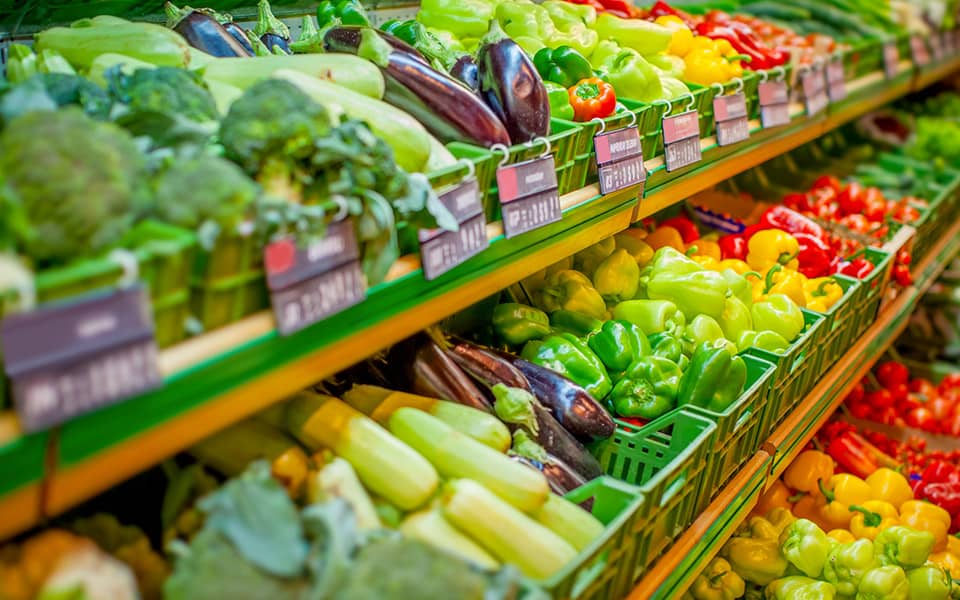Factors Which Drive Innovations Toward the Next Generation of Refrigeration System Design

*On June 1, 2023 Emerson’s Climate Technologies business became a new standalone company – Copeland. Though our name has changed, we are building on more than a century of HVACR innovation and industry leadership, and Copeland continues to offer the same products, industry stewardship, and learning opportunities you’ve grown to trust. Information found on this webpage posted before June 1, 2023 may contain our old name or branding, but you can be at ease knowing it was created with the knowledge and expertise of Copeland.
The coronavirus pandemic has increased the retail food industry’s collective focus on food quality, safety and sanitation in supermarkets while driving consumer adoption of click-and-collect. At the same time, industry regulations impact retailer behaviors. These factors have brought more attention upon refrigeration systems. In a recent Progressive Grocer article (pages 76–80), I explored how refrigeration products, monitoring and sensing devices can support these initiatives.

Impacting food quality and safety
A grocer’s approach to refrigeration is a fundamental part of creating ideal shopping experiences for consumers. Starting with the configuration of the display cases, merchandising strategies are designed to present food in the most appealing ways. Many cases are now equipped with enhanced controls that turn on lights when a shopper approaches. By leveraging case controls and the internet of things (IoT) technologies, retailers can more effectively keep perishable foods within ideal temperature ranges, thus positively impacting food quality and safety while maximizing shelf life.
Continued improvements in data analytics and cloud-based, IoT technologies are enabling connectivity among equipment and devices, which will allow retailers to achieve much greater holistic controls of not only their refrigeration assets, but also other key facility systems, such as HVAC and lighting. These are areas in which Emerson has invested significant resources and will continue to do so in the future.
Closely related to that are the abilities to monitor and track the temperatures and locations of perishable foods throughout various steps along the cold chain journey.
Acceleration of click-and-collect
If what we’ve seen in 2020 is any indication, the supermarket industry can expect the continued adoption of online fulfillment options. This change in consumer shopping preferences will continue to drive innovations in the next generation of refrigeration system design.
With the growing popularity of click-and-collect, retailers are adding capacity specifically for these cold-storage purposes. With variable-capacity modulation capabilities that can adapt to changing load variations, the Copeland™ digital X-Line series provides refrigeration flexibility and reliability in click-and-collect applications. In addition, its onboard controls can be networked into a supermarket’s building management system (BMS) for complete refrigeration control and monitoring.
Our facility management controls (E2) and enterprise software (Connect+) also help retailers to remotely monitor their refrigeration assets, optimize system performance, and provide data-driven, proactive alerts of potential equipment issues.
The role of regulations
The regulation of refrigerants continues to be a source of great uncertainty for our industry. For several years, regulations have targeted the phase-down of hydrofluorocarbon (HFC) refrigerants to reduce carbon emissions and their potential contribution to climate change. Many retailers face global, national and state regulatory mandates that ban the use of refrigerants with high global warming potential (GWP) and call for the deployment of energy-efficient refrigeration equipment. As a result, the industry is undergoing a shift toward alternative refrigerants with lower GWP levels and no ozone depletion potential (ODP).
All of this has helped to bring low-GWP refrigeration solutions into the spotlight, and Emerson supports a wide range of options for retailers along the sustainability continuum.
Whether it’s natural refrigerants like CO2 or propane, or lower-GWP synthetic A1 or A2L blends, Emerson equipment is designed to cover the full spectrum of refrigerant preferences in various types of architectures. It’s important to remember that there is no one-size-fits-all solution for this refrigerant transition; food retailers are employing a wide range of strategies, depending on their unique regulatory and sustainability mandates.
Many operators simply may not immediately require a drastic reduction in refrigerant GWP and instead are seeking a more gradual transition toward their future sustainability goals. We are helping these retailers to develop equipment strategies that will allow them to transition to lower-GWP refrigerants today, while giving them a pathway for achieving reduced GWP levels in the future.
Energy regulations are also in play, and Emerson is committed to helping the industry meet Department of Energy (DOE) efficiency targets for commercial refrigeration equipment. For example, our recent launch of the Copeland digital X-Line series is designed to meet the DOE’s annual walk-in energy factor (AWEF) efficiency standards for walk-in coolers. These products can also help operators in the state of California to comply with the California Air Resources Board (CARB) requirements for small-format grocery and convenience stores. The X-Line series utilizes low-GWP R-448A and is designed to service a limited number of medium- or low-temperature refrigeration fixtures — making it ideal for small, urban store formats or large supermarkets seeking to add refrigeration loads outside of their existing direct expansion (DX) systems.
Innovation throughout the cold chain
Leveraging the power of IoT, operational data and the software that can extract insights and value from this information will also play much larger roles in future supermarket refrigeration strategies. To that end, continued efforts to achieve connectivity throughout the various links of the cold chain will allow supermarkets to gain much greater control of food quality and safety well before it reaches the shelves of grocery stores.
Protection for high-value shipments just got even better
by Alex Axelsson | Cold Chain, Transportation
We’re excited to announce the release of Copeland’s newest real-time tracker, the GO Real-Time...

Three proven strategies to prevent cargo theft
by Chris Lafferty | Cold Chain, Transportation
The over-the-road (OTR) transport industry is experiencing a surge in cargo thefts. As thieves...

Four Keys to Successful Cold Chain Shipping
by Michelle Rodriguez | Cold Chain
Temperature management best practices for maximizing perishable food quality and safety When...
The post Factors Which Drive Innovations Toward the Next Generation of Refrigeration System Design appeared first on Copeland.